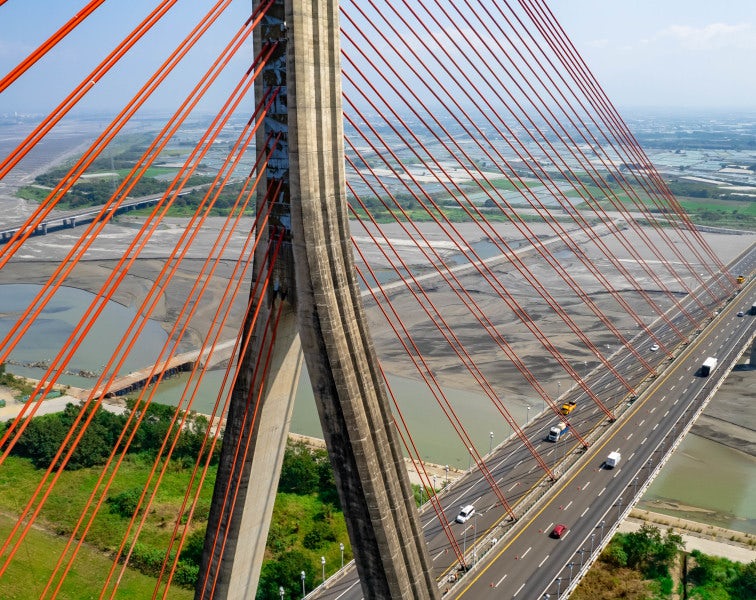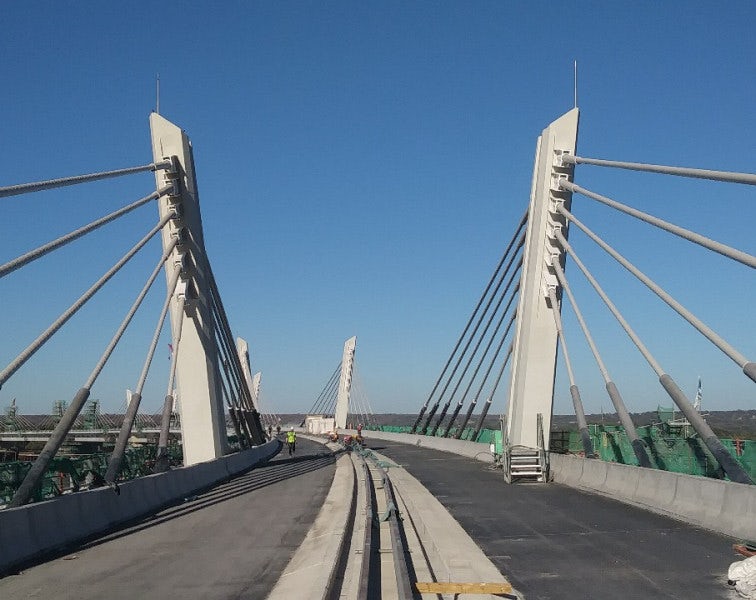Bridges

Bridges and viaducts form an essential part of a country's local and national infrastructure and its economy
Our bridge-building legacy

Hoechst Bridge,
Germany
DYWIDAG's bridge-building legacy began in the 1880s when son and father-in-law, Dyckerhoff and Widmann, developed their cement factory into a construction company specializing in bridge engineering technology.
In 1927, the Alsleben (Germany) arch-bridge was the first-ever structure to feature a prototype DYWIDAG bar post-tensioning system. Since that date, DYWIDAG has continued to improve its systems—in line with the growing demands of modern construction technology.
Today, our extensive portfolio of bridge construction includes highway and railway bridges and stay cable and arch bridges, all erected using different methods.
Bridge post-tensioning
Our engineers specialize in the configuration of post-tensioning systems for new and existing bridges. We offer a complete product range of bonded, unbonded, and external strand, wire and bar post-tensioning systems—and stay-cable technologies.
Our research and development combine the highest standards of safety and reliability with economic efficiency.
With worldwide production facilities, we can react to local market needs with flexibility—and we're driving automation with the prefabrication of post-tensioning tendons.
Using technology for inspection and monitoring
Safe bridges are always under surveillance. Our engineers can configure or retrofit smart systems with advanced monitoring schemes to track and model structural and environmental phenomena across entire bridge structures.
And we use robots to inspect stay cables—without the need for bridge closures.
Once smart tendons or smart cables are installed, we can monitor the condition of these systems and of the surrounding structural elements. This monitoring is coupled with an in-built 24/7 alert and escalating alarm system for increased safety.
Capturing qualitative and quantitative data allows our engineers to interpret a bridge's data, assess any structural weaknesses with accuracy—and formulate corrective strategies in time.
Smart systems can predict external incidents like heavy storms that can affect a bridge's structural safety—and detect structural problems before they become serious.
Maintenance
We can rehabilitate, repair, and strengthen your structure for capacity upgrades, changes in use, changes in design codes, construction defects, ongoing protection, and deterioration damage.
Prevention maintenance stops damage and degradation—measures include protective cleaning, robotic wrapping systems, de-icing, and stay cable corrosion protection. Preservation maintenance rehabilitates a bridge to maintain its life. Our experience in repair and strengthening means that we identify potential risks before work begins.
We have experience in all types of rehabilitations, from the repair of grouting conditions and concrete to pylon and shear strengthening—as well as robotic PE welding systems and external prestressing.
Asset data pinpoints the root cause of structural problems for diagnosis and repair and informs confident budgeting decisions—making bridges safer, stronger, and smarter.

Frédéric Guitard,
Cable Stayed Bridge Area Manager, Signature on St. Lawrence Construction JV
Despite the unique construction challenges we faced, DYWIDAG addressed them all on time— in very practical, well-thought-out, and easy-to-implement ways.

